
|
|||
|---|---|---|---|
|
|
Methodological proposal for
teaching the pedaling technique of Propuesta metodológica para la enseñanza de la técnica de pedaleo de la bicicleta mediante un sistema de retroalimentación visual aumentada: un estudio preliminar |
|
|
|
Laboratory of Research during the Exercise – Physical Education School Federal University of Rio Grande do Sul – UFRGS, Porto Alegre (Brazil) |
Guilherme Garcia Holderbaum* Antônio Carlos Stringhini Guimarães (in memorian)** Ricardo Demétrio de Souza Petersen*** |
|
|
|
Abstract The aim of this study was to test a methodology to teach the pedaling technique of cycling using a visual augmented feedback system (AVF). Two subjects without experience in cycling were used. A pre-test was conducted to determine the maximal oxygen uptake (VO2máx), and to establisher the work load to be used during the learning sessions which was defined to be the load that was associated with the 60% of VO2máx. Four sessions were held. One subject was submitted to AVF and the other augmented feedback (AF). After the last learning session, a pos-test showed an increase of 240% in the index of effectiveness (IE) for the subject that received VAF and a reduction of 80% in the IE for the subject that received AF. VAF was found to be an appropriate tool in the process of learning the pedalling technique. Keywords: Cycling. Pedaling technique. Visual augmented feedback. Index of effectiveness.
Resumen El objetivo de este estudio fue probar una metodología para enseñar la técnica de pedaleo de la bicicleta mediante un sistema de Feedback Visual Aumentado (FVA). Fue aplicado en dos personas sin experiencia en el ciclismo. Se llevó a cabo un pre-test para determinar el consumo máximo de oxígeno (VO2máx), y para establecer la carga de trabajo que se utilizarían durante las sesiones de aprendizaje que fueron equivalentes al 60% del VO2máx. Se llevaron a cabo cuatro sesiones. Durante la práctica, uno del los sujetos recibió FVA y el otro sólo recibió Feedback Aumentado (FA). Después de la última sesión de aprendizaje, un pos-test mostró un incremento del 240% en el índice de eficacia (IE) para el sujeto que recibió FVA y una reducción del 80% en IE para el sujeto que recibió AF. Los resultados del estudio mostraron que la FVA se presenta como una herramienta adecuada para el proceso de aprendizaje de la técnica de pedaleo en el ciclismo. Palabras clave: Ciclismo. Técnica de pedaleo. Retroalimentación visual aumentada. Índice de eficacia.
|
|||
|
|
EFDeportes.com, Revista Digital. Buenos Aires, Año 17, Nº 173, Octubre de 2012. http://www.efdeportes.com/ |
|
|
1 / 1
Introduction
Cycling has become a quite studied sport in the last years, especially in the areas of physiology and biomechanics. There has been an emphasis on the study of the pedaling technique of cycling, specifically on the strategies of how to improve it (Broker, Gregor & Schmidt, 1993). Cycling is a very competitive and extremely technical sport, that’s why it needs a higher comprehension of its technique, so that it can be taught. The lack of emphasis on the pedaling technique is maybe because the coaches don’t know much about it.
The use of feedbacks can help the teaching-learning process. The feedbacks are the information that comes as a result of the movement that is played back to the learner. Among the feedbacks there is the visual augmented feedback (VAF) that consists in information transmitted to the learner in a visual way. The movement is provided as a complement to the oral information transmitted by the teacher (Schmidt & Wrisberg, 2001).
The VAF is referred in the literature as a determinant factor in the process of teaching-learning, as well as in the acquisition of results and in the assimilation of the pedaling technique of cycling (Sanderson & Cavanagh, 1990)
Studies have shown that it is possible to characterize the pedaling technique of cyclists through the knowledge of the forces applied to the pedal.
In order to measure these forces, it is necessary to use a pedal equipped with force sensors, which allows describing the forces applied (Álvarez & Vinyolas, 1996).
The tangential component of force (Fx) acts parallel to the surface of the pedal, while the normal component of force (Fy) acts perpendicularly to the surface of the pedal. From these two force components it is possible to calculate the effective force (EF); this perpendicular force applied to the crank is considered the bicycle propulsion generated force (Sanderson & Cavanagh, 1990; Hull, & Wootten, 1996; Hull, & Davis, 1981; Davis, & Hull, 1981; Brooke, Hoare, Rosenrot, Triggs, 1981; Candotti, 2003).
It’s possible to analyze the cycle of pedaling by dividing it into two phases: the phase of propulsion (from 0° to 180°) and the phase of recovering (from 180° to 360°) or in four quadrants: the 1st from 0° to 90°, the 2nd from 90° to 180°, the 3rd from 180° to 270°, and the 4th from 270° to 360° (Lafortune & Cavanagh, 1983). The variable magnitude, direction and sense of force application on the pedal have different combinations in the two phases and in the four quadrants in the cycle of pedaling, directly implying in the generated propulsion. Literature shows that these variables are used like basis to VAF. This state comes from the idea that the muscle forces are directly linked to the performance and the VAF of these forces would be a suitable way for their control (Sanderson & Cavanagh, 1990).
In order to teach technical aspects about some modalities it’s necessary to develop a methodology to transmit the information about the technique of the evaluated individual. The objective of this study was to develop and test a methodology to teach the pedaling technique of cycling using a system of VAF.
Materials and method
Two students (n=2) from a public school in the city of Montenegro/RS participated in this study. Both male, age 15, with neither experience in cycling competition nor in using toy clip pedal in their bikes.
The students and the responsible for them were informed of the objectives and procedures involved in the study and formally agreed with it. The students went through a process of familiarization with the evaluations, as well as with the equipment and protocol.
This study was approved by the research commission of the Physical Education School of the Federal University of Rio Grande do Sul.
Pre-experimental period
The pre-experimental period was divided in two days of evaluation: on the first day the students were submitted to the slope procedure to determine the maximal oxygen uptake (VO2max). A computerized cycloergometer ERGOFIT (Medical Graphics Corp. St Louis, USA) was used for this test. It provides the working load of each stage and cadence. An ergoespirometer CPX/D (Medical Graphics Corp. St. Louis, USA) was also used. It allows the direct measure of VO2 (Figure 1).
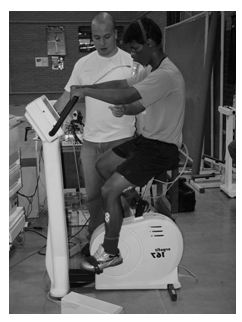
Figure 1. Pre-test, first day of evaluation, maximal oxygen uptake
On the second day they were submitted to the identification of the working load values and heart rate to be used in the practice sessions that corresponded to 60% of the VO2 max of each individual, as well as the registers of dynamometry (forces) and eletrogoniometry (pedal angles related to the crank movement and crank angles) signals. An ergoespirometer, already described previously, and a cycloergometer MONARK (model GIH- Stockholm, Sweden) with manual load adjust, were also used (Figure 2). For the forces register it was used a platform-pedal of force coupled to the cycloergometer and directly connected to a signals conditioner ENTRAN MSC6 (Entran ltd., England) with modules MSC-AI using bridge feeding of 1V and gain of 1K. The system provides information about the components of the normal force and about the components of the tangential force. The signals conditioner was connected to a microcomputer Celeron 1000 Hz equipped with a D/A (digital-analogical) computer card of 16 channels CIO-DAS 16 / Jr / 330 / 1600Hz (Dataq Instruments, Inc., Akron, USA) (Figure 3).
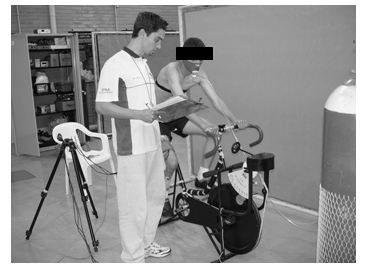
Figure 2. Pre-test, second day of evaluation, identification of the working load values and heart rate
to be used in the practice sessions that corresponded to 60% of the VO2 max of each individual
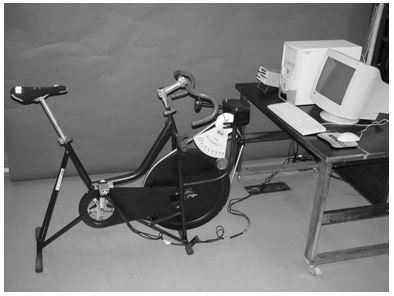
Figura 3. Cicloergometer MONARK (model GIH – Stockholm, Sweden) with manual load adjust and signals conditioner connected to a microcomputer
Celeron 1000 Hz equipped with a D/A (digital-analogical) computer card of 16 channels CIO-DAS 16 / Jr / 330 / 1600Hz (Dataq Instruments, Inc., Akron, USA)
The procedures of platform pedal calibration adopted in this study are according to other studies referred to in the literature (Neto, Schmidt, Candotti, Loss, Zaro, Cervieri & Guimarães, 2001).
To register of the angle of the pedal related to the movement of the crank was used a potentiometer of Spectrol 2k coupled to the platform-pedal. The angle of the crank was measured with the use of an eletromagnetical sensor of the reed switch type, as it was done before (Welbergen & Clijsen, 1990; Hug, Decherchi, Marqueste & Jammes, 2003). This consists of a magnet attached in the beginning of the pedaling cycle (0° of the crank) and another attached to the crank of the cycloergometer at the same height. This way we have the beginning and the end of the pedaling cycle and it’s possible to calculate the angle of the crank.
The cadence of 60 rpm was adopted for the second day of evaluation of the pre-experimental period and also for the learning sessions since it was a slower stirring frequency, which favors the motor learning of the technical gesture of the cycling (Magill, 2000). For the control of the pedaling cadence it was used a cycle computer ECHO-F2.
The load correspondent to 60% of the VO2max was adopted because it was a level of moderate intensity of exercise, which is like training for improving the aerobic capacity (McArdle, Katch & Katch, 1992) and to establish the criteria of physiological normalization of the work load for the individuals.
The duration of this test depended on the time of stabilization of the VO2. After this period, the register of forces applied to the pedal, as well as of the angles of the pedal related to the crank and of the crank were taken for over a minute. The sample frequency was of 2300Hz for each channel of the dynamometry and eletrogoniometry signals.
The learning sessions started 48 hours after the end of the pre-experiment evaluations.
The learning sessions
For the acquisition of the dynamometry signals during the learning sessions it was used the software Data Acquisition System DAS2 (version 2.61.07mp, 2002) (Mechanical Measures Laboratory of the Engineering School of the Federal University of Rio Grande do Sul). For the accomplishment of the learning sessions, the same cycloergometer MONARK, force platform pedal, signals conditioner and microcomputer described in the pre-experiment period (second day), were used.
Four learning sessions of 35 minutes each were accomplished during four days, one in each day. The first five minutes were used to get the students ready for exercising and to have them know the equipment. They were submitted to a protocol of practice sessions to improve the pedaling technique of cycling. The augmented feedback (AF) was used for one of the students and the visual augmented feedback for the other. On this protocol the individuals pedaled one minute and received feedback correspondent to that minute. So, if they pedaled for 15 minutes they would receive a total of 15 orientations on how to improve their pedaling technique on each practice session.
The correspondent load to 60% of the VO2max of each individual used in the practice sessions was maintained during the whole session. Another factor that helped control the VO2 was the relation between the percentage of VO2max and the percentage of maximal heart rate (McArdle, Katch & Katch, 1992). Through this relation it was possible to predict the percentage values of VO2max.This made the VO2 control more accessible in the practice sessions, since the HR correspondent to the VO2 was identified in the maximal test done in the pre-experimental period. For this, a Heart rate monitor POLAR PACER (Heart View Sporting Technology LTDA, Finland) was used.
When submitted to the practice sessions the participants received the same instruction: (1) keep the cadence during the practice sessions of the pedaling technique, (2) increase the effective force application in the propulsion phase and decrease the retrogressive forces in the recovering phase and (3) improve the index of effectiveness in the propulsion and recovering phase of the pedaling cycle.
The verbal information given to the students were related to the direction of the applied forces to the pedal and were transmitted to them during the intervals of the practice series, as follows:
-
1st quadrant: push the pedal down and forward;
-
2nd quadrant: push the pedal down and pull it backward;
-
3rd quadrant: pull the pedal up and backward;
-
4th quadrant: pull the pedal up and push it forward.
These information were also transmitted visually through slides as shown on Figure 4.
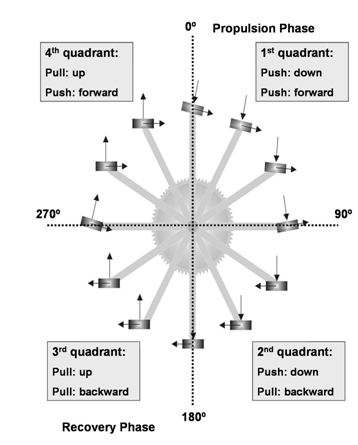
Figure 4. The verbal information related to the direction of the forces applied to the pedal
transmitted visually to the students through slides during the intervals of the practice series
This slide allowed the evaluator to explain clearly where the individual should direct the force to. This way, the interaction of the evaluator with the evaluated individual was verbally and visually, where the evaluator provided standardized information related to the technique of the individual.
The difference between the two individuals training is the presence of VAF. The first individual received AF. The AF consisted of information transmitted to the individual about his technique, orientations about the direction of the forces on the pedal, transmitted through the slides and the instructions so that he could use these two sources to correct his technique. The second individual received VAF. This one, besides using the same instruments the other one used, he also used the representative image of the pedaling technique presented to them in the interval of the practice series.
The verbal instructions and the representative graphic image of the pedaling technique were introduced to the individual at the end of the acquisition of the dynamometry and eletrogoniometry signals, that is, in the interval of the practice series. The graphic image introduced to the individual was his EF curve. The curve of the individual was overlapped to a reference curve. The reference curve used as a goal to be reached by the individual was produced by a cyclist of the elite category, integrant of the Gaucha Federation of Cycling, evaluated in the Lab of Research in Exercise (LAREX) in the Physical Education School (PES) of the Federal University of Rio Grande do Sul (UFRGS). This reference curve is shown on Figure 5.
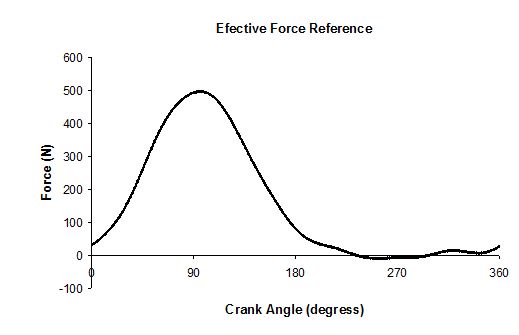
Figure 5. Curve of efective force (EF) reference
During the practice sessions, the individual received VAF in an alternate way not to compromise the practice, because the full providing of VAF can increase the performance, however it can harm the learning since the integrality of this information can cause dependence on the learner, making it difficult or even impossible to fulfill the skills when the task is accomplished without the VAF help (Magill, 1984; Sanderson & Cavanagh, 1990; Magill, 1997; Rose, 1997; Broker, Gregor & Schmidt, 1993; Magill, 2000; Schmidt & Wrisberg, 2001).
After the forces applied to the pedal by the individual were collected, the data were processed through a data processing routine elaborated specifically for this study and the EF curve was obtained and presented through the computer monitor. Afterwards, the curve was analyzed by the evaluator and presented to the individual, overlapped to the reference curve. This way, it was possible for the individual to visualize how close or far his curve was in relation to the reference curve. Right after the presentation of the curve to the individual, the slides and information about the direction of the forces on the pedal, were also presented. The information about the curve as well as the information about the direction of the forces on the pedal were presented to the individual in the interval of the series practice, that is, in one minute, when the individual was stopped (not pedaling).
The processing time of the information, after it was given, was about 2 seconds. So, the information was given to the individual 2 seconds after the recording. The 58 seconds left were used to show the graphic representation of his pedaling standard (curve of effective force) and to transmit the necessary information to improve his pedaling technique.
Post-experimental period
The post-experimental period was used as post-test for the last force curve (fifteenth curve) obtained from each individual in the fourth day of the practice sessions. This curve was compared to the force curve obtained in the pre-test.
Data-processing
The analysis of the dynamometry and eletrogoniometry signals were done by using routine of processing implemented by the software DAS2 (Mechanical Measures Laboratory of the Engineering School of the Federal University of Rio Grande do Sul). The individual data were submitted to a comparison of pre and post test with the one who received AF and the one who received VAF.
The data analysis was done from the accomplishment of the average of the ten first alternate cycles of pedaling.
From the decomposition of the normal (Fy) and tangential (Fx) forces in relation to the crank it was possible to calculate the effective force (EF) (equation 1) that consists of the sum of the components of normal and tangential forces perpendicular to the crank, using the angle of the pedal related to the crank (Figure 6) (Hug, Decherchi, Marqueste & Jammes, 2003).
![]()
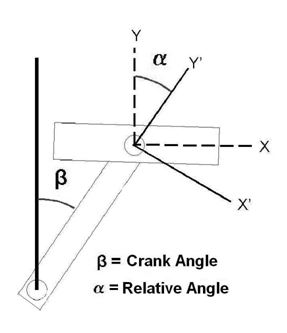
Figure 6. a angle of the pedal related to the crank and (b) angle of the crank
The resulting force applied to the pedal was also calculated from the decomposition of the normal (Fy) and tangential (Fx) forces (equation 2). The instrumented pedal used on this study did not allow the measurement of the component of medium-lateral force, so, this resulting force applied to the pedal represents the total force applied on the sagital plan.

Later the impulse of the effective (IEF) and resultant forces (IRF) were calculated (equations 3 and 4 respectively; Lafortune & Cavanagh, 1983).

The pedaling technique of the individual along the cycle was analyzed through the index of effectiveness (IE). This consists of the ratio between the impulse of the effective force (IEF) and the impulse of the resultant force (IRF) (equation 5). The IE indicates how much of the RF was directioned as EF, that is, used for the propulsion of the bicycle (Lafortune & Cavanagh, 1983; Sanderson, 1991).

The effective tax (ET) was also used for the analysis of the pedaling technique. It consists of the ratio between the effective and resulting forces along the cycle (equation 6).
![]()
The IE and the ET of each individual were analyzed before and after the practice sessions.
Results
On table 1 are presented the results of the IE of the sample groups.
Table 1. Index of effectiveness (IE) expressed in percentage of the impulse of the resulting force for the two evaluated groups

The individual that received VAF presented an improvement on his IE, that is, he improved his standard of force application on the pedal in 240%, but the individual that received AF presented a decrease on his standard of force application of 80%.
On the Figures 7 (A and B) and 8 (A and B) are presented the graphics of the ET along the pedaling cycle of the two evaluated individuals in the pre and post experiment.
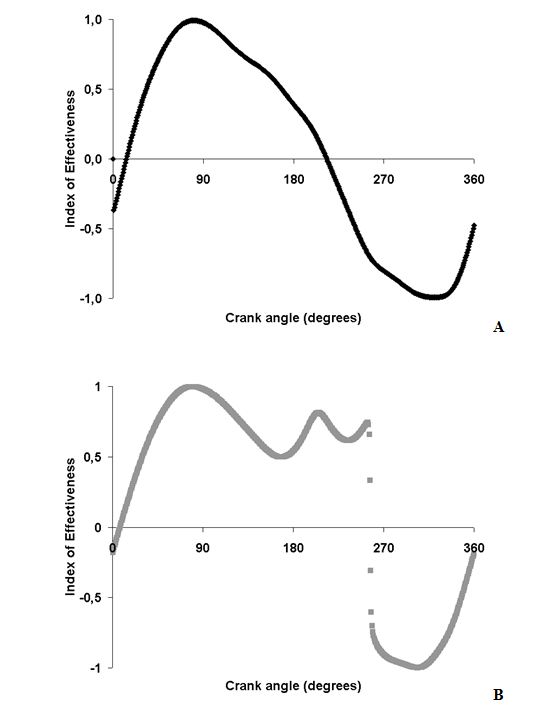
Figure 7. ET of the pre (A) and post-experiment (B) of the participant with VAF
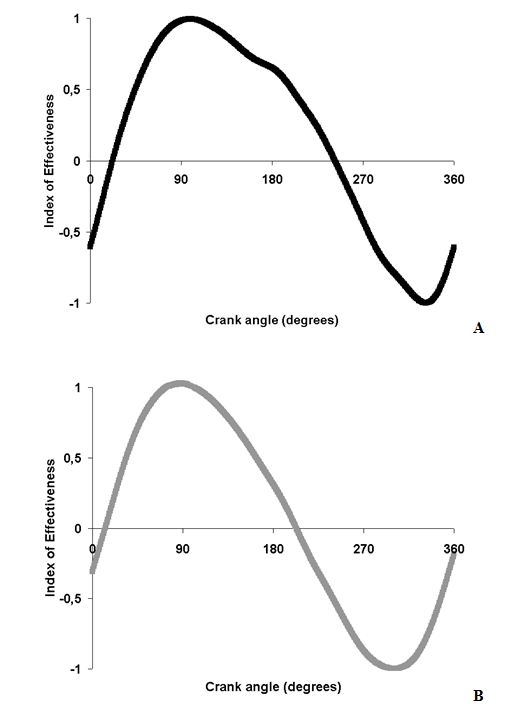
Figure 8. ET of the pre (A) and post-experiment (B) of the participant with AF
Discussion
The level of motor learning of the individual improves with practice and it is, frequently, inferred by the observation of levels relatively stable in the individual motor performance (Schmidt & Wrisberg, 2001).
It is observed an increase of 240% in the IE of the individual that received VAF, and also an improvement on his ET in the end of the second quadrant and in the beginning of the third quadrant.
According to some authors (Broker, Gregor & Schmidt, 1993; Magill, 2000; Rose, 1997) the performance is an observable behavior, that refers to an accomplishment of a skill in a determined moment and/or situation. But the learning is defined as an alteration in the capacity of the individual at performing some skills, that means an improvement relatively permanent of the performance due to the practice or experience. However, it’s possible to infer from a first analysis that the individual that received VAF improved his performance in relation to his standard of force application on the pedal, although it would still be necessary to evaluate if this increase on the performance is related to the learning.
The increase obtained in the IE average to the individual that received VAF can be related to the quality of the visual information transmitted, since the EF represents a fundamental component to the accomplishment of the movement (Sanderson & Cavanagh, 1990).
The VAF is an appropriate instrument in the obtaining of a goal, because it provides information about the success of the ability that has just been completed, then the learner can determine if the accomplished movement was appropriated to correctly perform the ability. The VAF helps the individual to achieve the desired ability easier and rapidly, because it works as motivation for the learner, since it can be used in the comparison of his own performance with the performance to be achieved (Broker, Gregor & Schmidt, 1993; Sanderson & Cavanagh, 1990).
Although some studies state that AF can favors the motor learning (Magill, 1984; Magill, 1997; Rose, 1997; Magill, 2000) the results obtained here with only one individual being submitted to four sessions concerned to the learning of the pedaling technique of cycling do not agree with the literature because the individual that received AF showed a decrease on the IE of 80%.
This phenomenon may be related to the attempt of the motor system readaptation, since this had only received verbal information and had also used the intrinsic information acquired during the practice sessions (Magill, 1984; Schmidt & Wrisberg, 2001).
To be possible to infer about the individuals level of learning, it is necessary to do tests of retention to evaluate how much this technical gesture remained in the memory of the individual, what characterizes the motor learning (Broker, Gregor & Schmidt, 1993; Sanderson & Cavanagh, 1990).
Conclusion
After this preliminar study it was possible to conclude that the VAF was effective as an instrument to be used for teaching the pedaling technique of cycling. We can also conclude that to obtain consistent learning results are necessary the realization of more detailed studies with more time for training and with retention tests for really evaluating the level of the individual learning.
References
-
ÁLVAREZ, G. & VINYOLAS, J. A New Bicycle Oedal Design for On-Road Measurements of Cycling Forces. Journal of Applied Biomechanics. 12: 131-141, 1996.
-
BROKER, J. P.; GREGOR, R. J. & SCHMIDT, R.A. Extrinsic Feedback and the Learning of Kinetic Patterns in Cycling. Journal of Applied Biomechanics. 9: 111-123, 1993.
-
BROOKE, J. D.; HOARE, J.; ROSENROT, P. & TRIGGS, R. Computerized System for Measurement of Force Exerted Within Each Pedal Revolution During Cycling. Physiology & Behavior, 26 (1) 139-143, 1981.
-
CANDOTTI, C. T. Características Fisiológicas e Biomecânicas da pedalada de ciclistas e triatletas. Tese de Doutorado. PPGCMH - Universidade Federal do Rio Grande do Sul – UFRGS, 2003.
-
DAVIS, R. R. & HULL, M. L. Measurement of Pedal Loading in Bicycling: II Analysis and Results. Journal of Biomechanics. 14(12): 857 – 872, 1981.
-
Hug F, Decherchi P, Marqueste T, Jammes Y. “EMG versus oxygen uptake cycling exercise in trained and untrained subjects”. Journal of Electromiography and Kinesiology, 14 (2): 187-195, 2003.
-
HULL, M. L. & DAVIS, R. R. Measurement of Pedal Loading in Bicycling: I Instrumentation. Journal of Biomechanics. 14(12): 843 – 856, 1981.
-
HULL, M. L. & WOOTTEN, D. An Improved Accuracy Six-Load Component Pedal Dynamometer for Cycling. Journal of Biomechanics. 29(8): 1105 – 1110, 1996.
-
Laboratório de Medições Mecânicas da Escola de Engenharia da Universidade Federal do Rio Grande do Sul - www.ufrgs.com.br/lmm acessado em 25/01/2004.
-
Lafortune MA & Cavanagh, PR. “Effectiveness and Efficiency during bicycle riding”. In: MATSUI & KOBASHI. K (Ed): Biomechanics VIII-B. Champaign, IL, Human Kinetics, pp. 928-936, 1983.
-
MAGILL, R. A. Aprendizagem motora: conceitos e aplicações. São Paulo: Editora Edgard Blucher Ltda, 2000.
-
___________. Aprendizagem motora: conceitos e aplicações. São Paulo: Editora Edgard Blucher Ltda, 1984.
-
___________. Motor Learning: Concepts and Applications. Boston: McGraw-Hill, 5º ed, 326 p. 1997.
-
McARDLE, W. D.; KATCH, F. I. & KATCH, V. L. Fisiologia do Exercício: Energia, Nutrição e Desempenho Humano. Rio de Janeiro: Editora Guanabara Koogan S.A. 3º ed, 1992.
-
Nabinger E. Desenvolvimento de um sistema de medição para análise biomecânica da pedalada de um ciclista, Dissertação de Mestrado. Faculdade de Engenharia da UFRGS: 1997.
-
NETO CD, SCHMIDT G, CANDOTTI CT, LOSS JF, ZARO MA, CERVIERI A & GUIMARÃES ACS. Desenvolvimento de uma plataforma de força em pedal de ciclismo. Revista Brasileira de Biomecânica / Brazilian Journal of Biomechanics, 3: 39-44, 2001.
-
ROSE, D. J. A Multilevel Approach to Study of Motor Control and Learning. Boston: Allyn & Bacon, 315 p., 1997.
-
Sanderson DJ. “The influence of cadence and power output on the biomechanics of force application during steady-state cycling in competitive and recreational cyclists”. Journal of Sport Sciences. 9: 191-203, 1991.
-
SANDERSON DJ & CAVANAGH PR. Use of augmented feedback for the modification of the pedaling mechanics of cyclists. Canadian Journal of Sport Sciences, 15(1): 38-42, 1990.
-
SCHMIDT, R. A. & WRISBERG, C. A. Aprendizagem e performance motora: Uma abordagem da aprendizagem baseada no problema. Porto Alegre: Artmed Editora, 2ª ed, 2001.
-
Welbergen E, Clijsen LPVM. “The influence of body position on maximal performance in cycling”. European Journal of Applied Physiology, 61: 138-142, 1990.
Another articles in English
 |

Búsqueda personalizada
|
|---|---|
|
EFDeportes.com, Revista
Digital · Año 17 · N° 173 | Buenos Aires,
Octubre de 2012 |
|